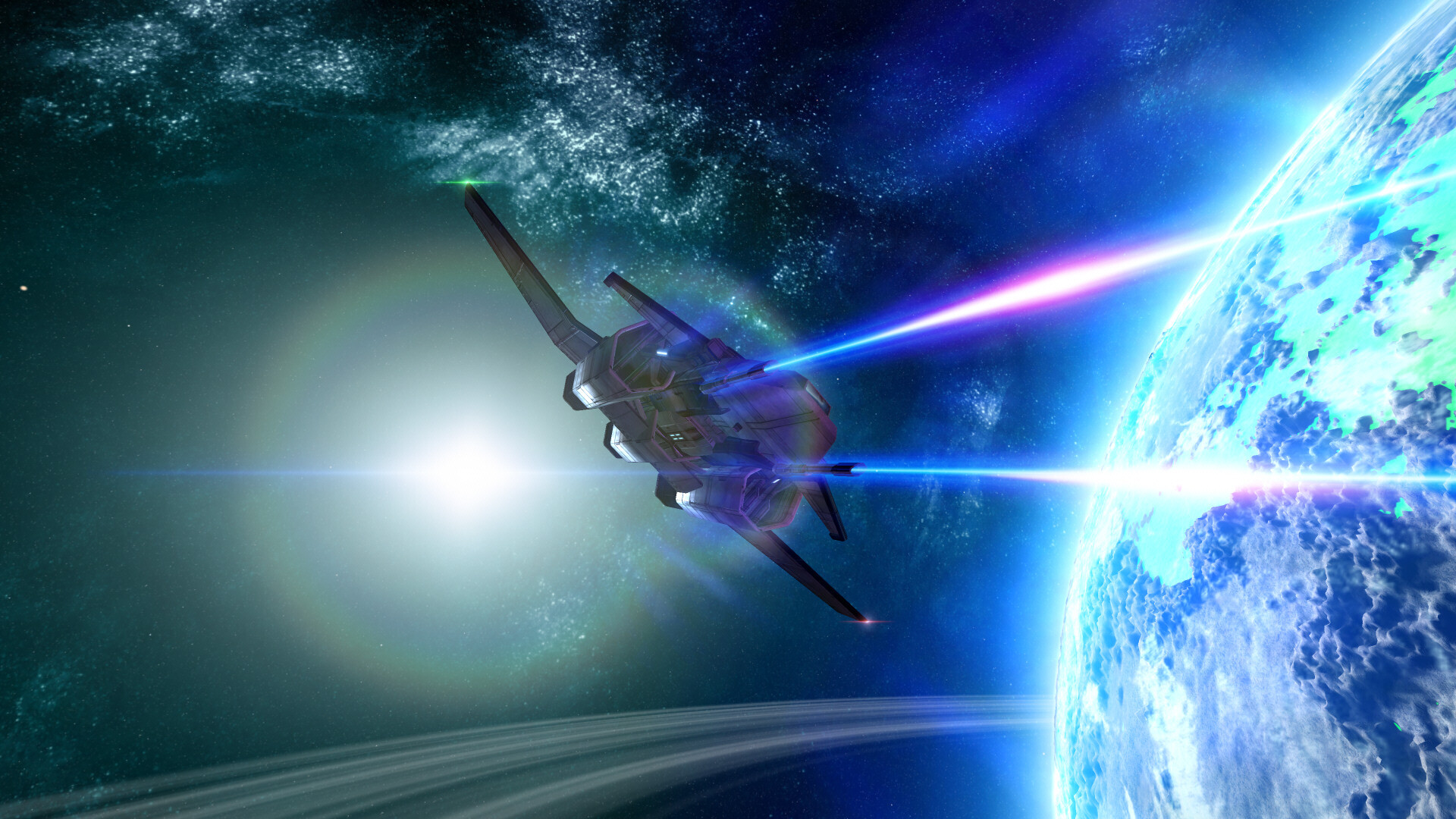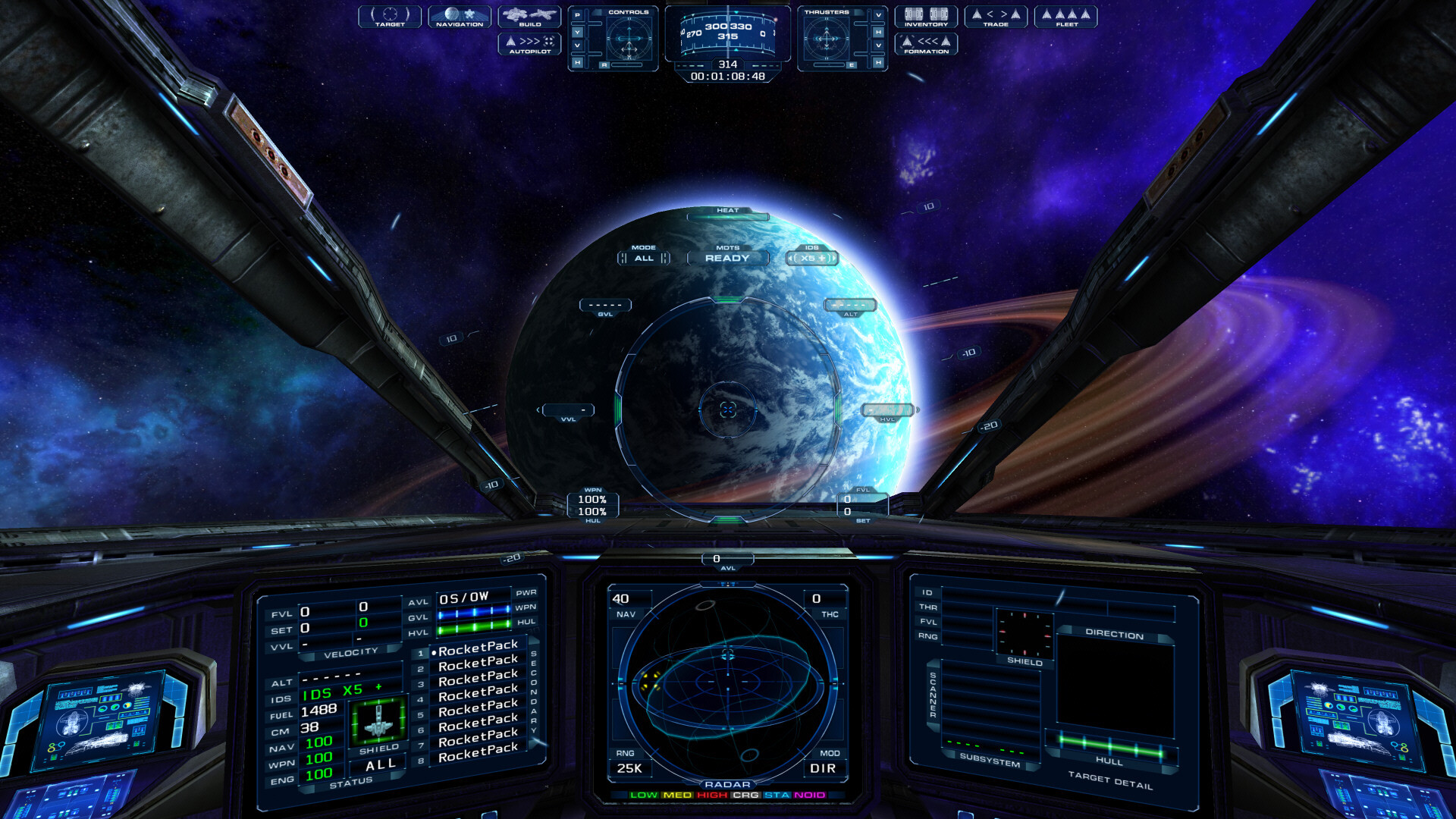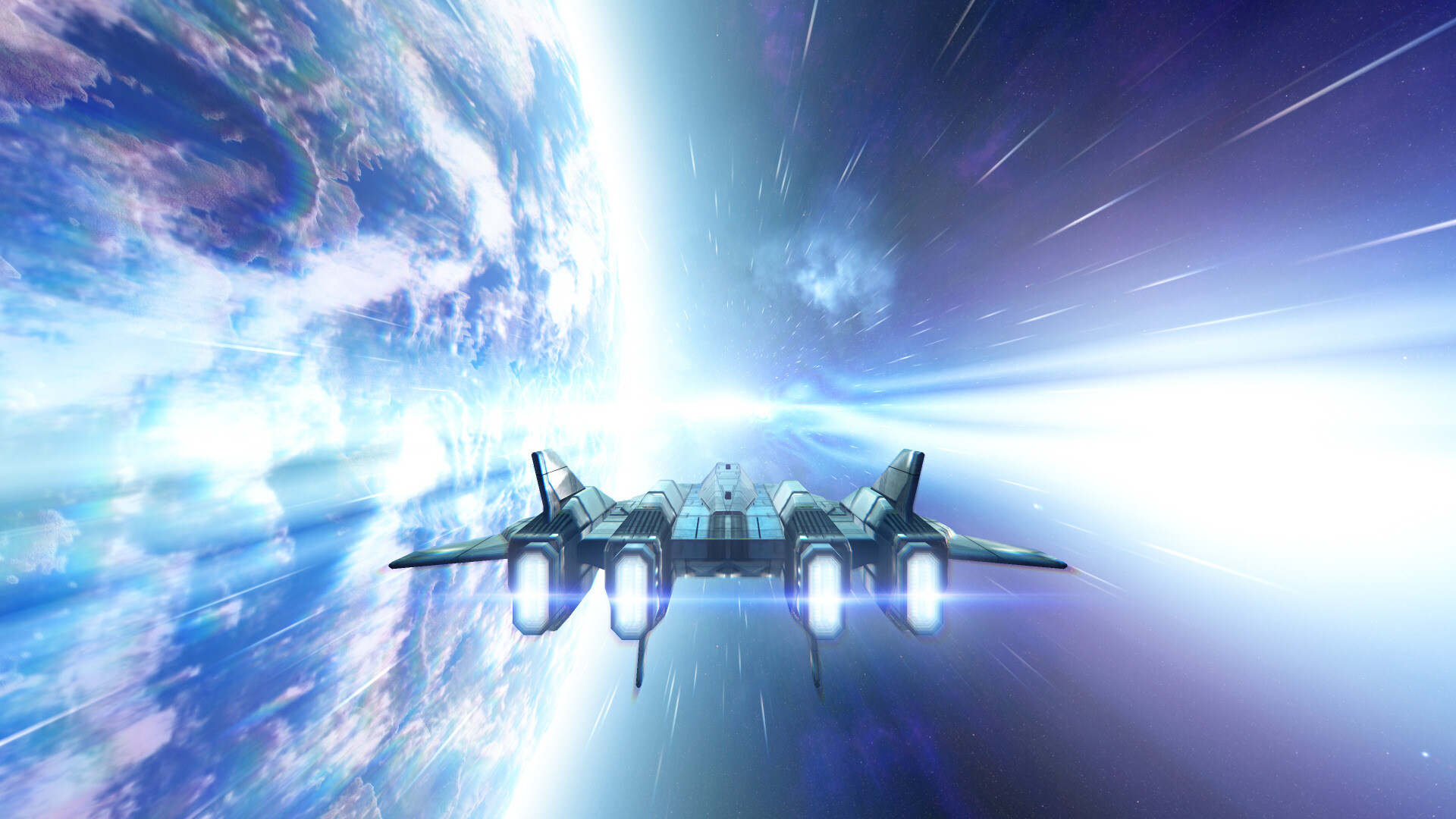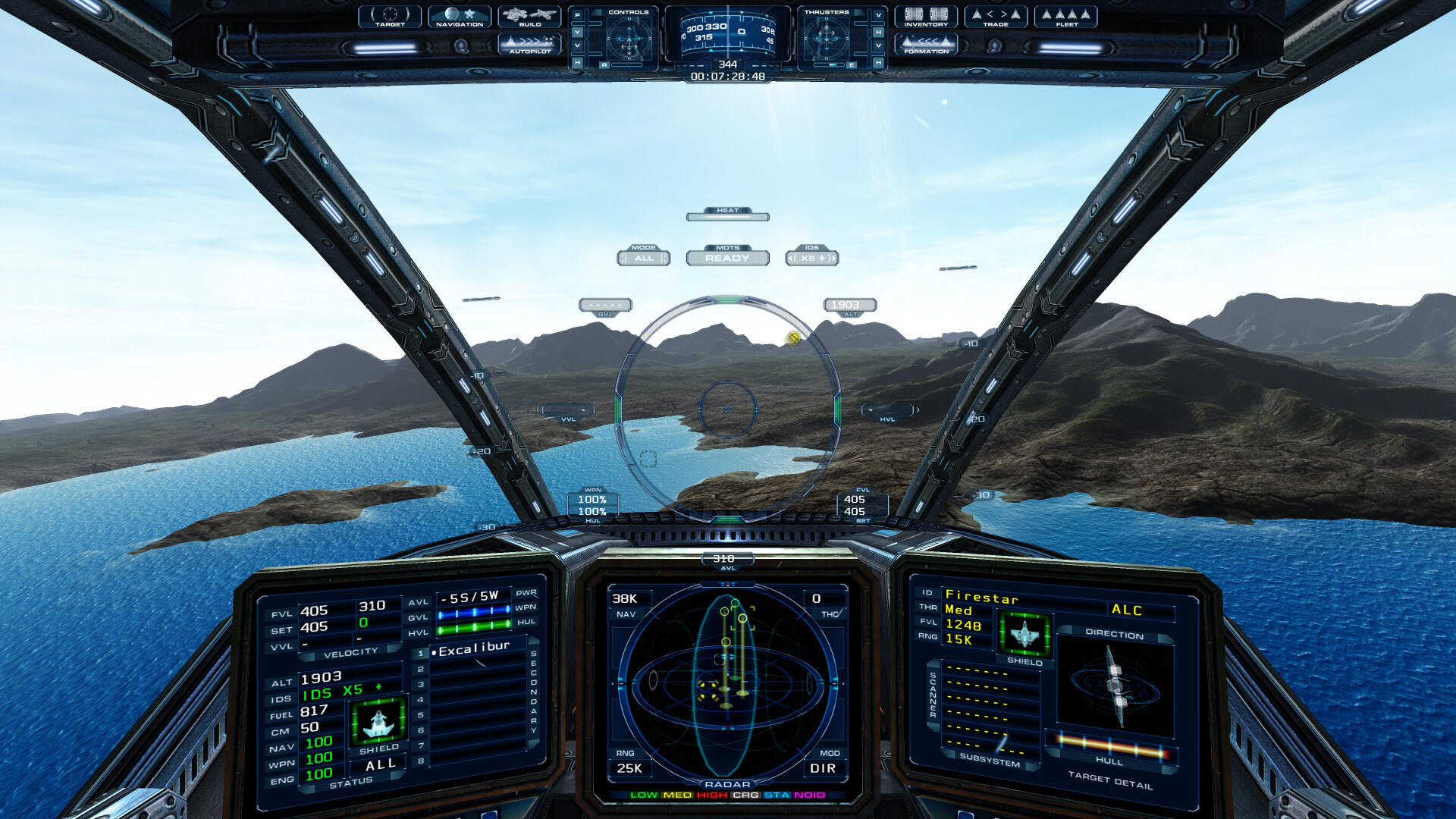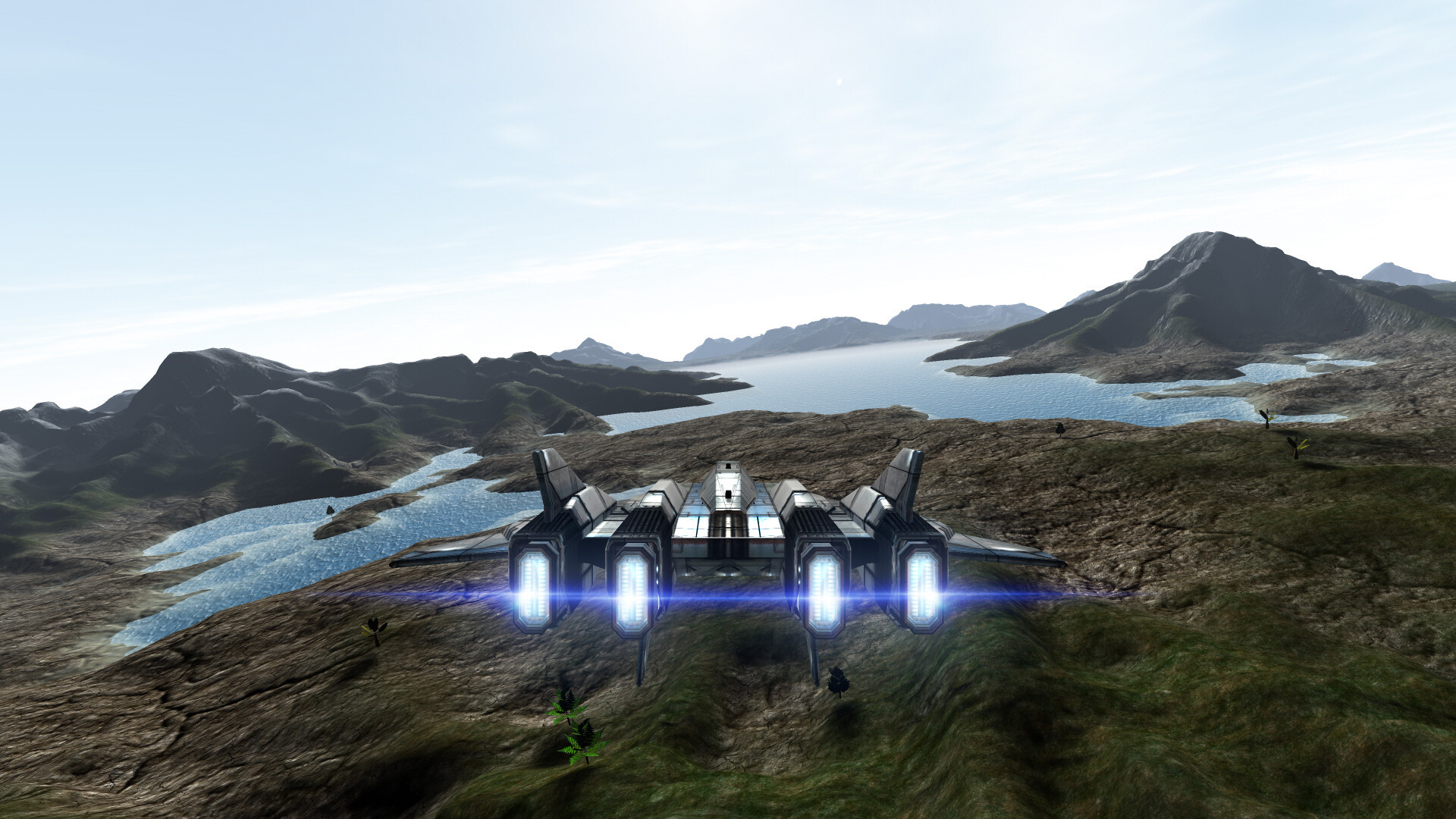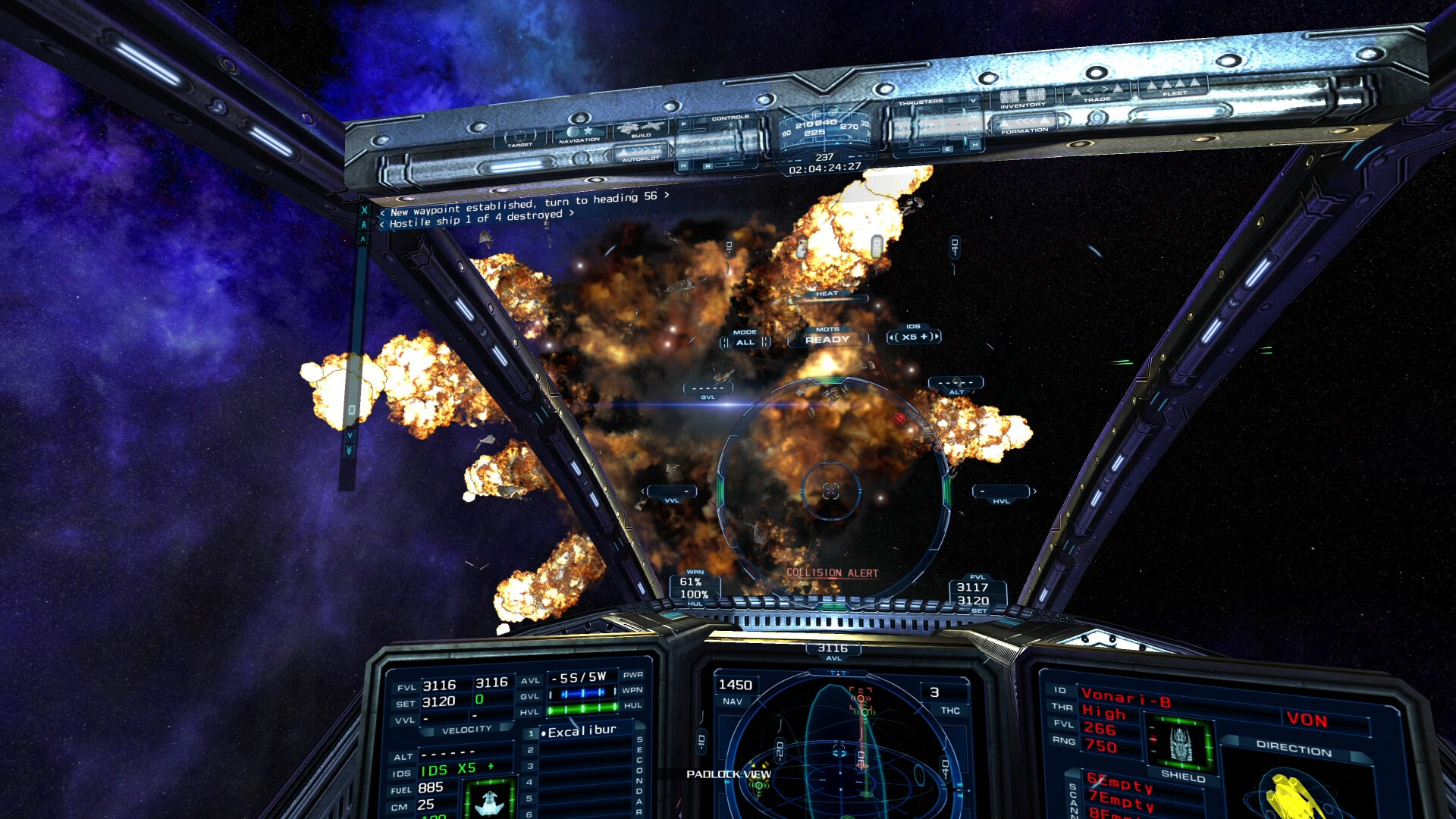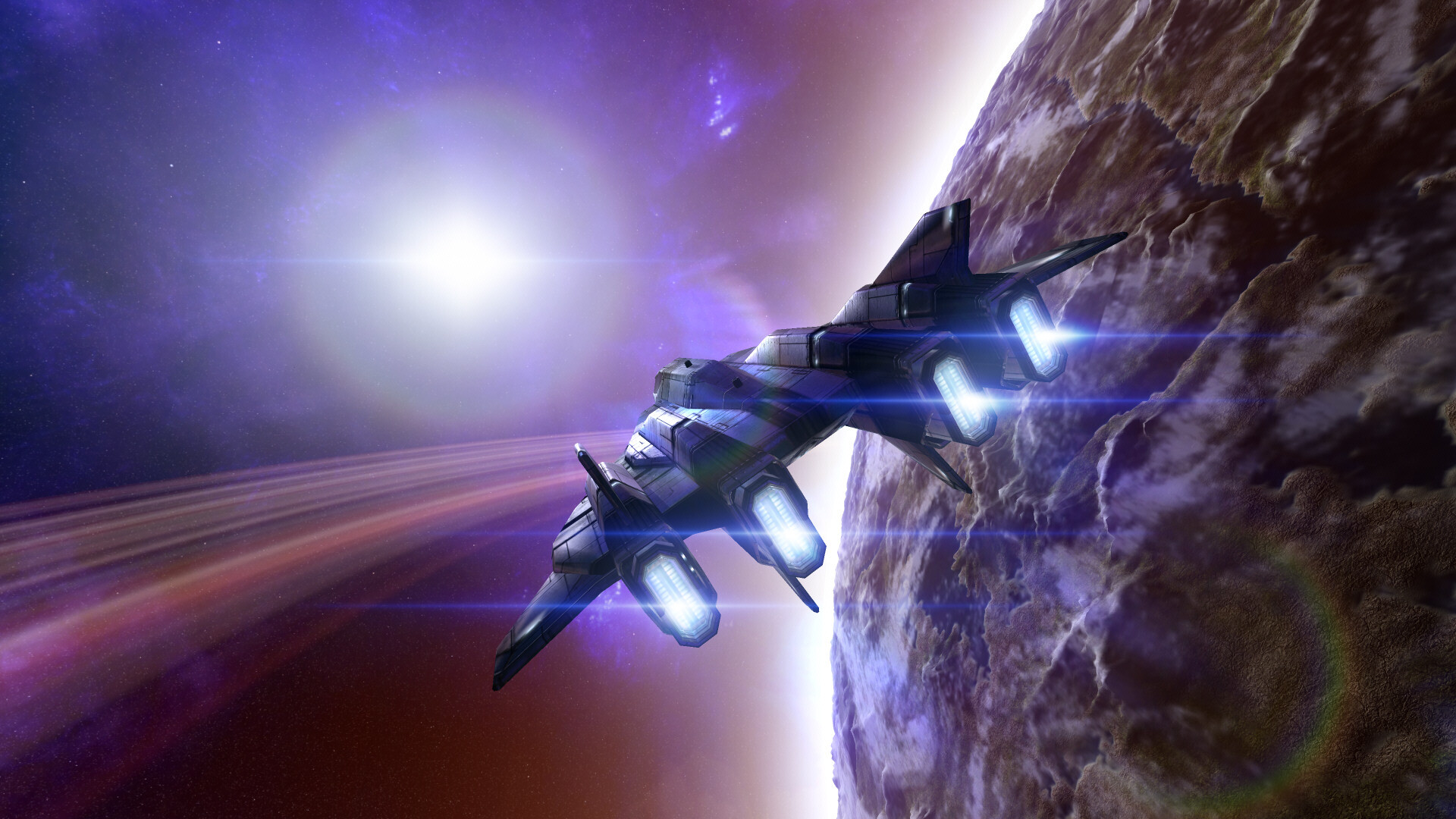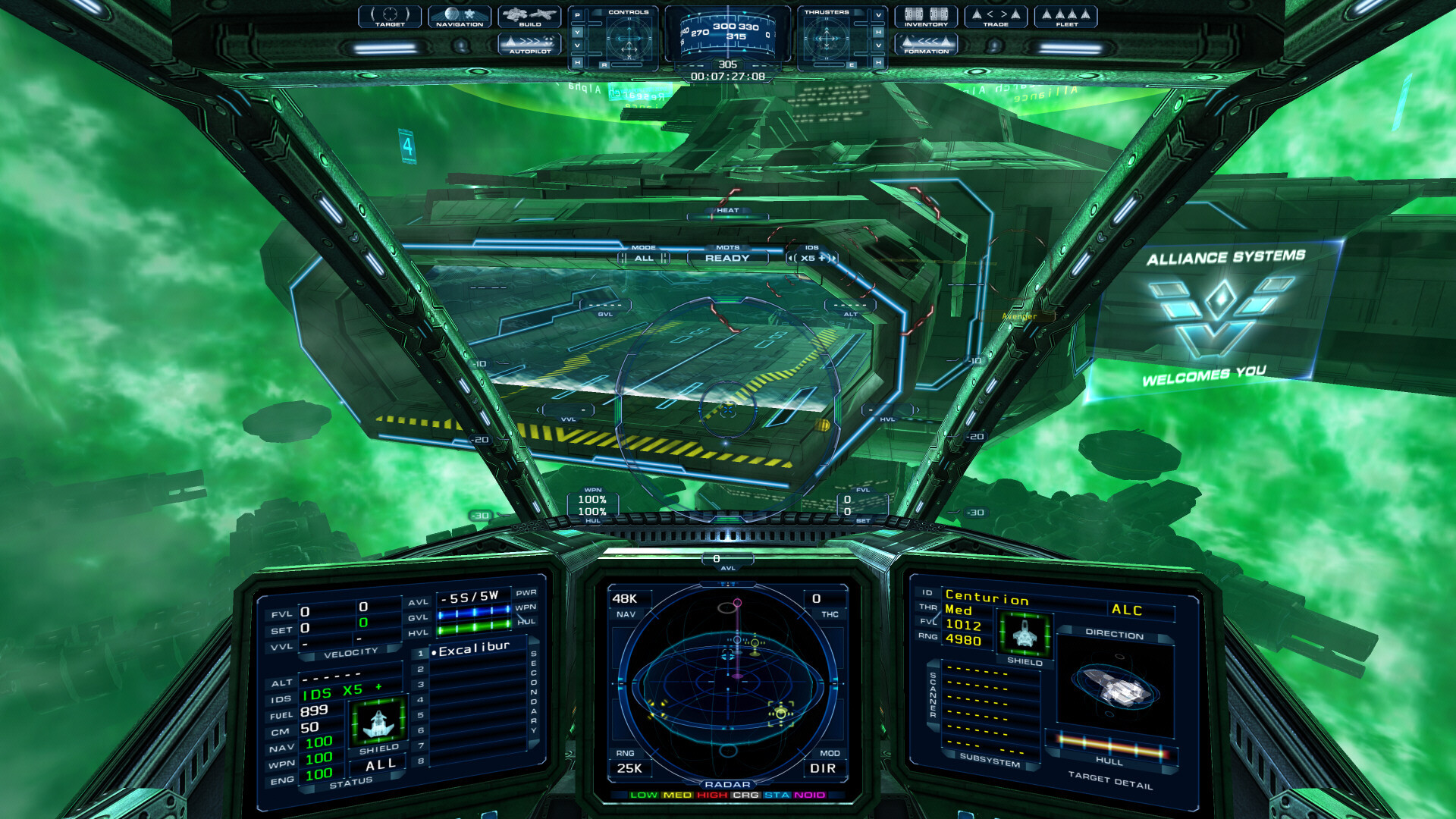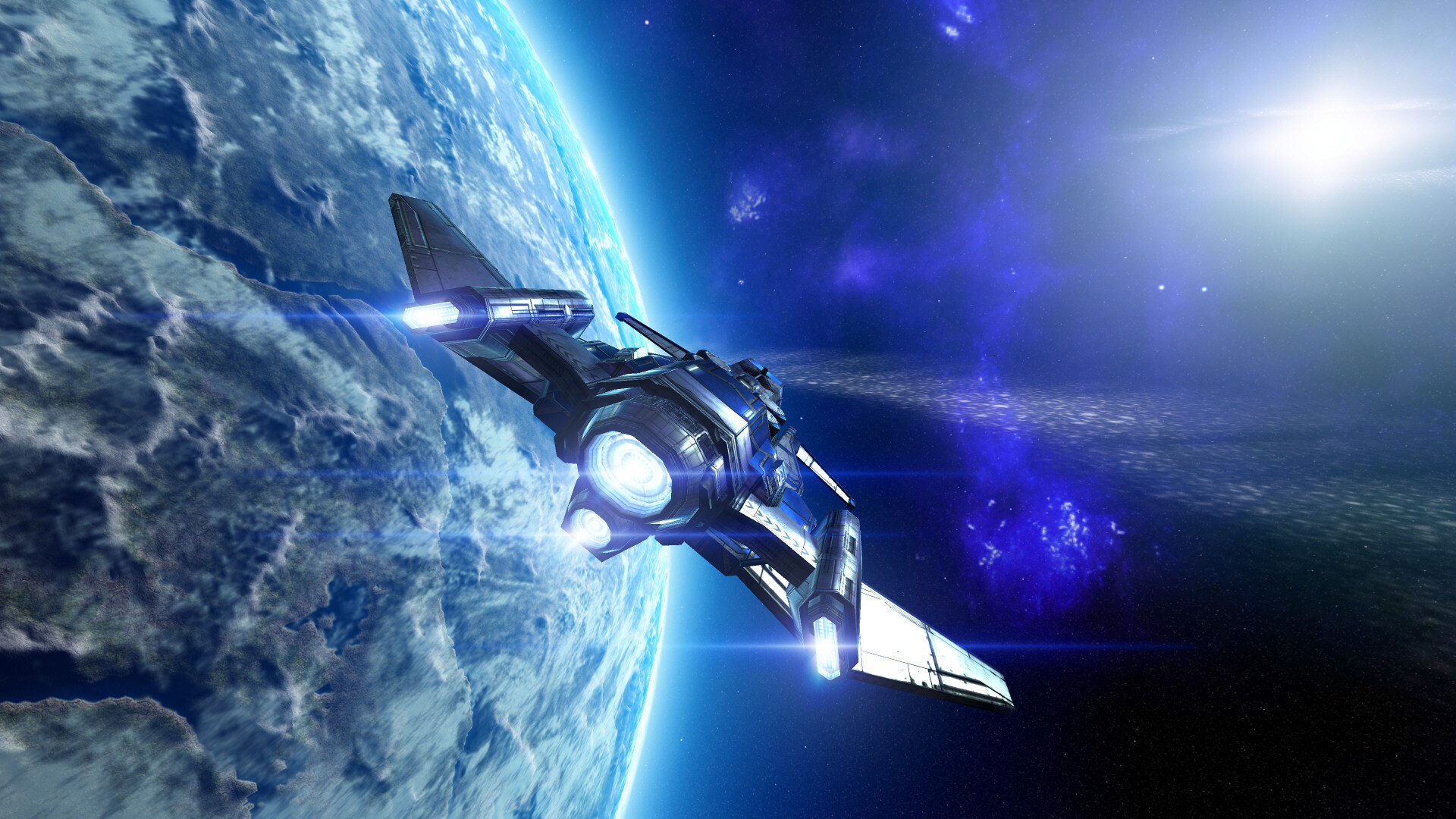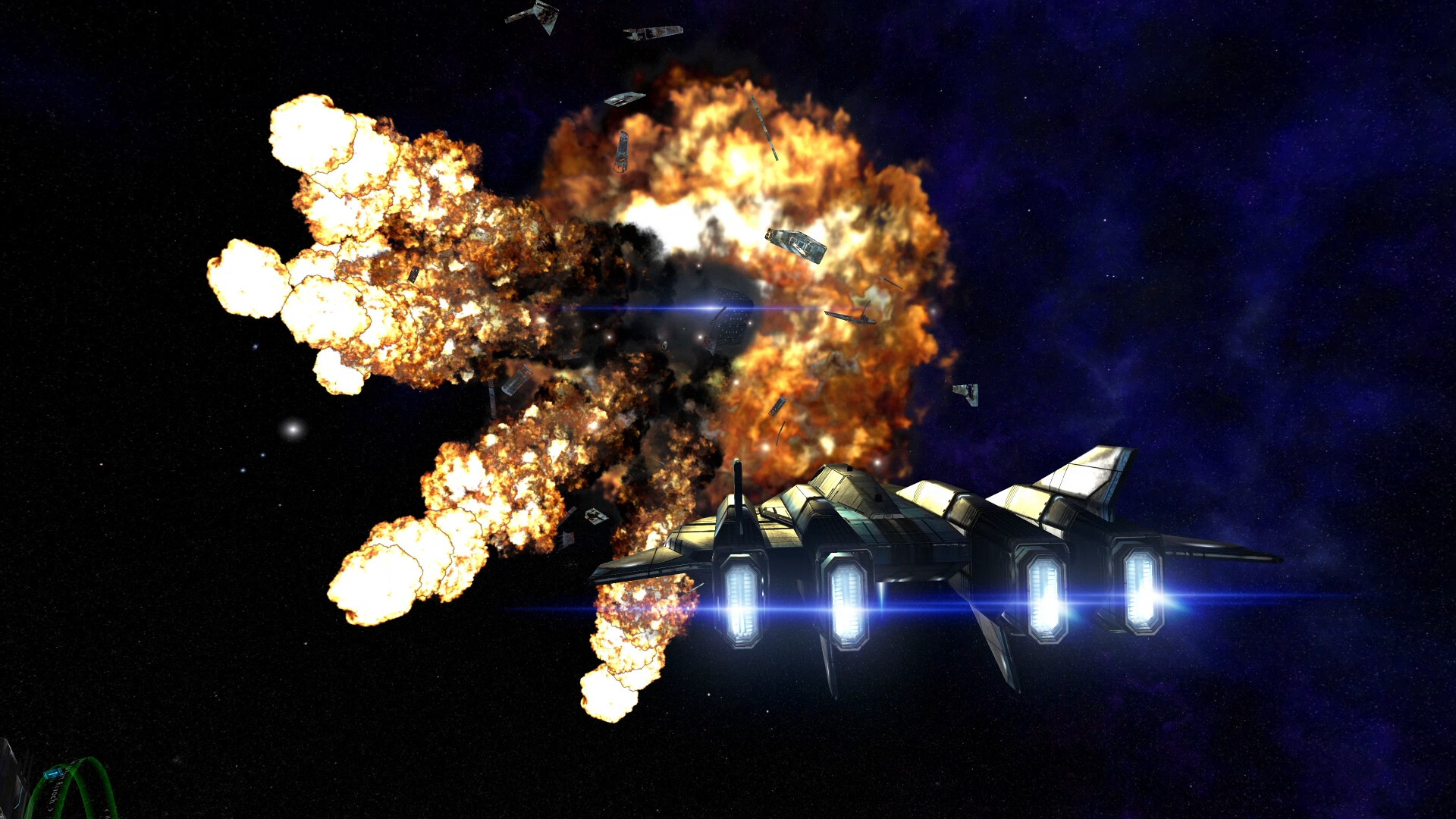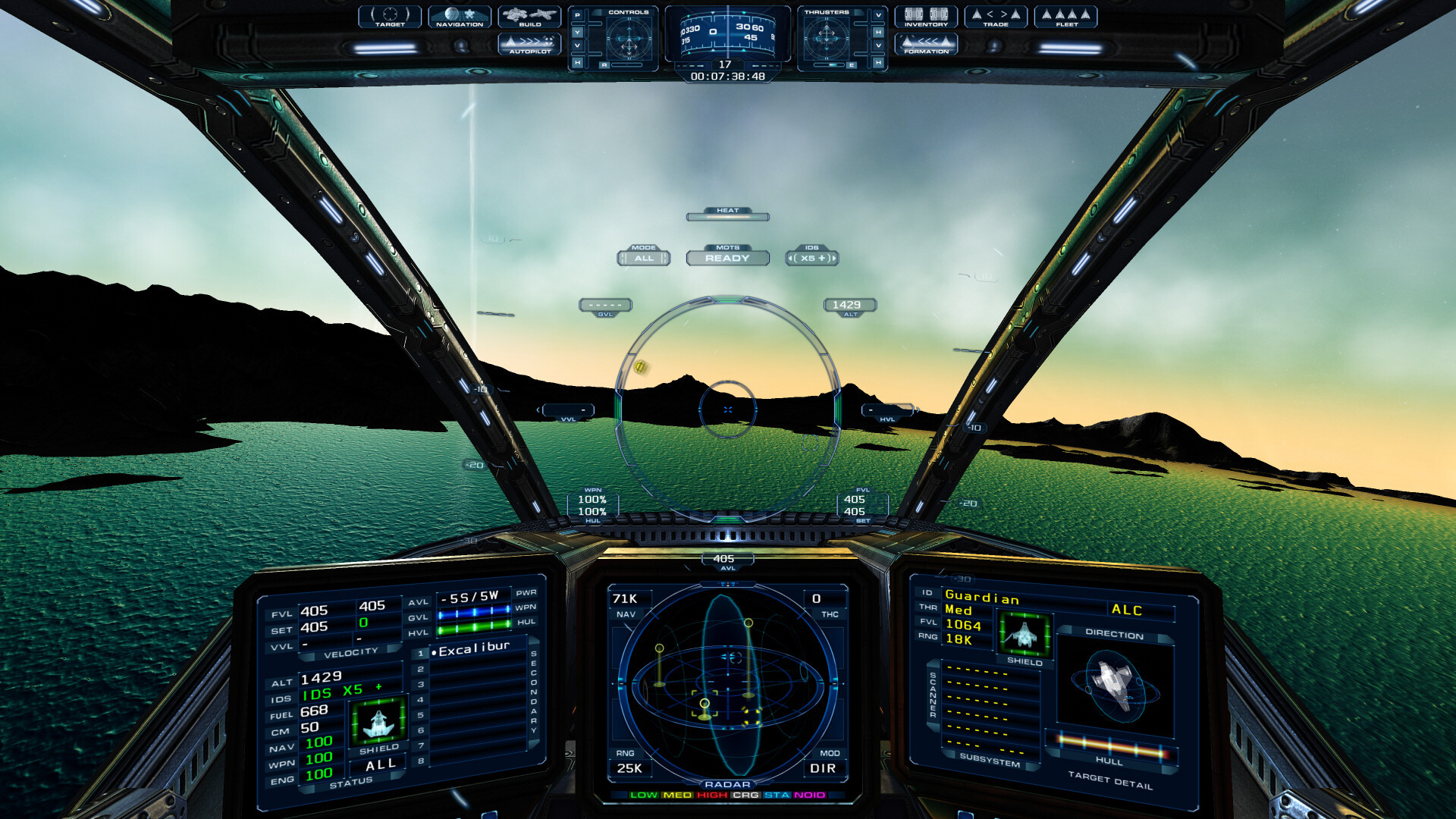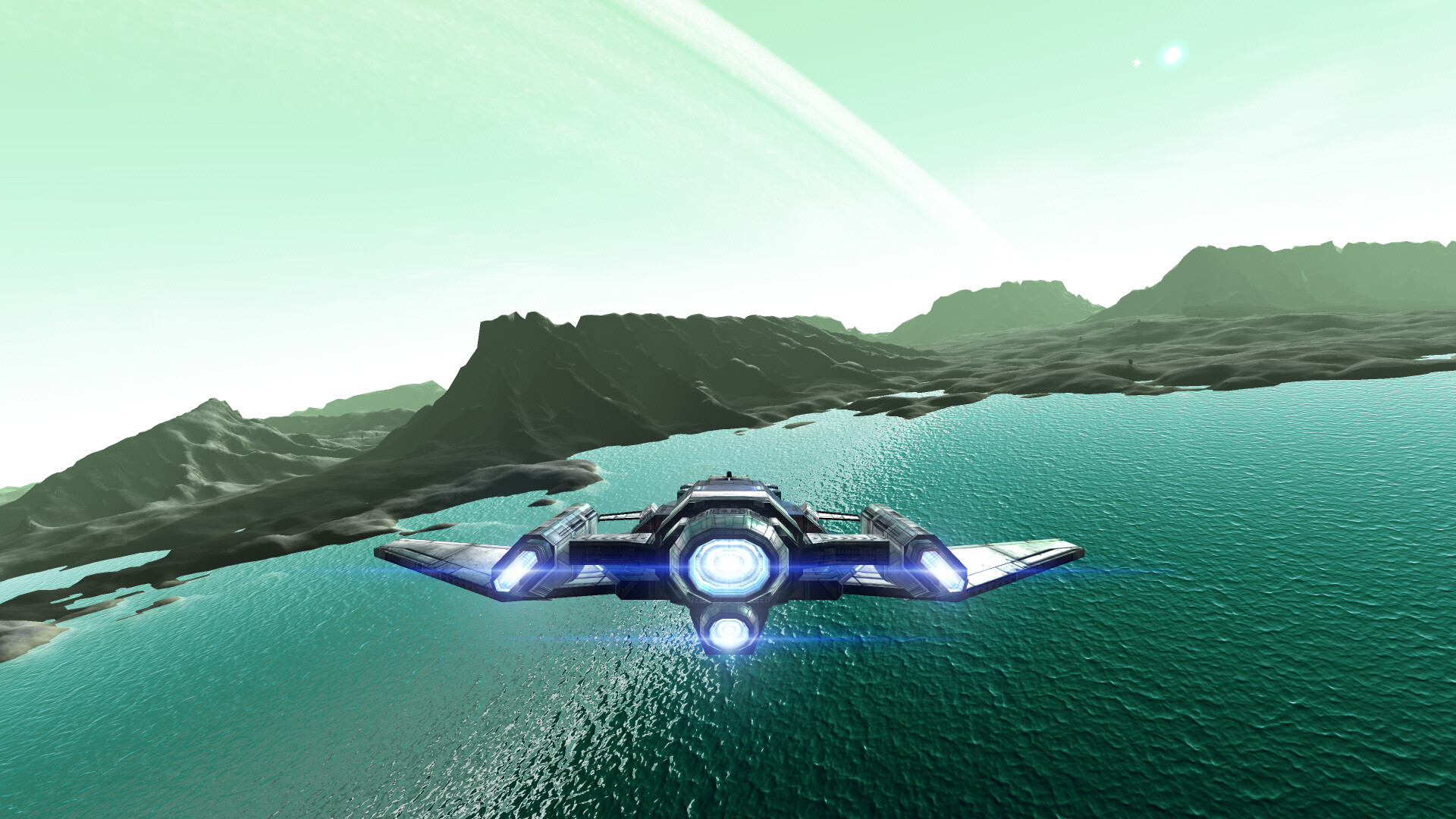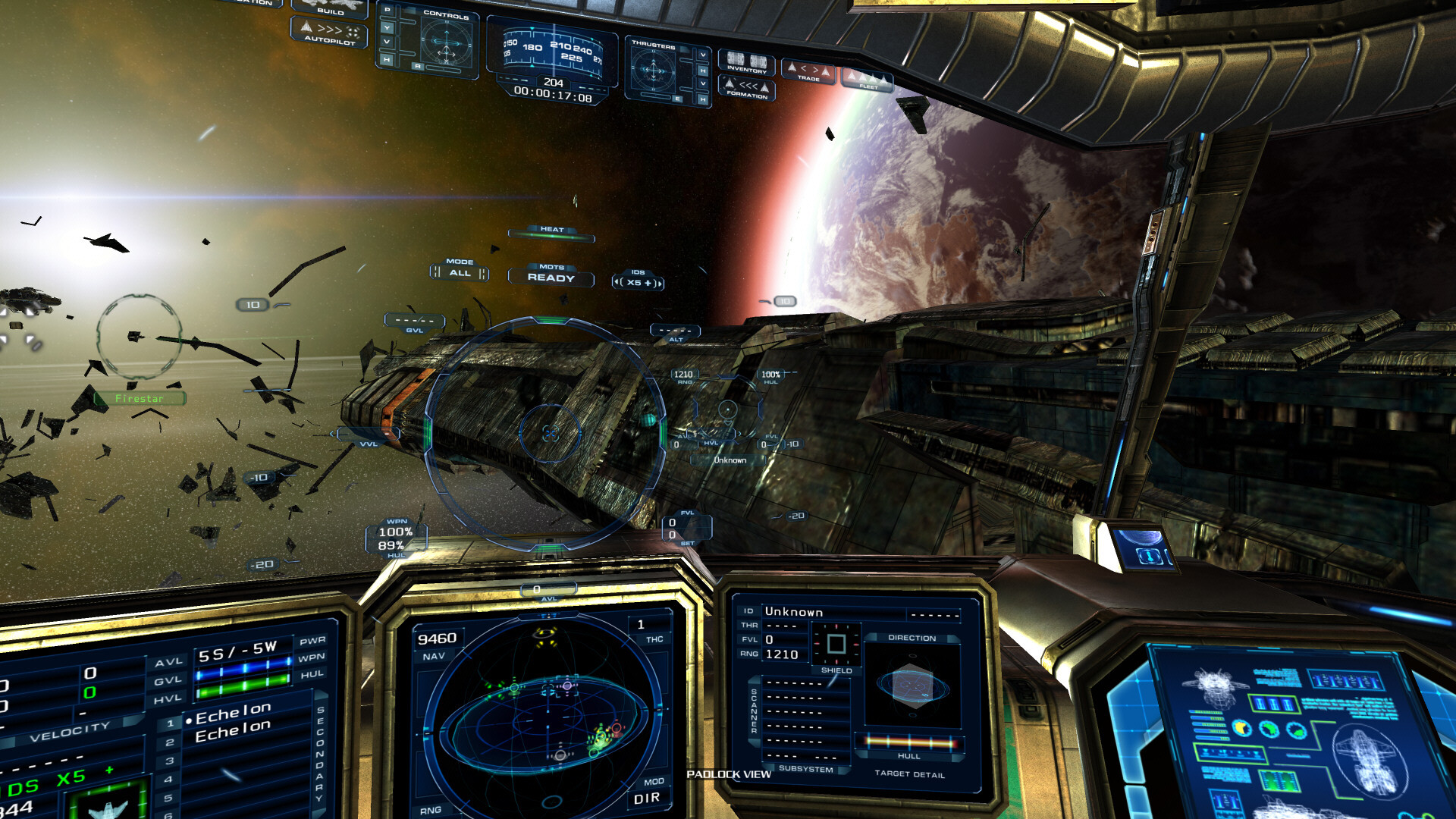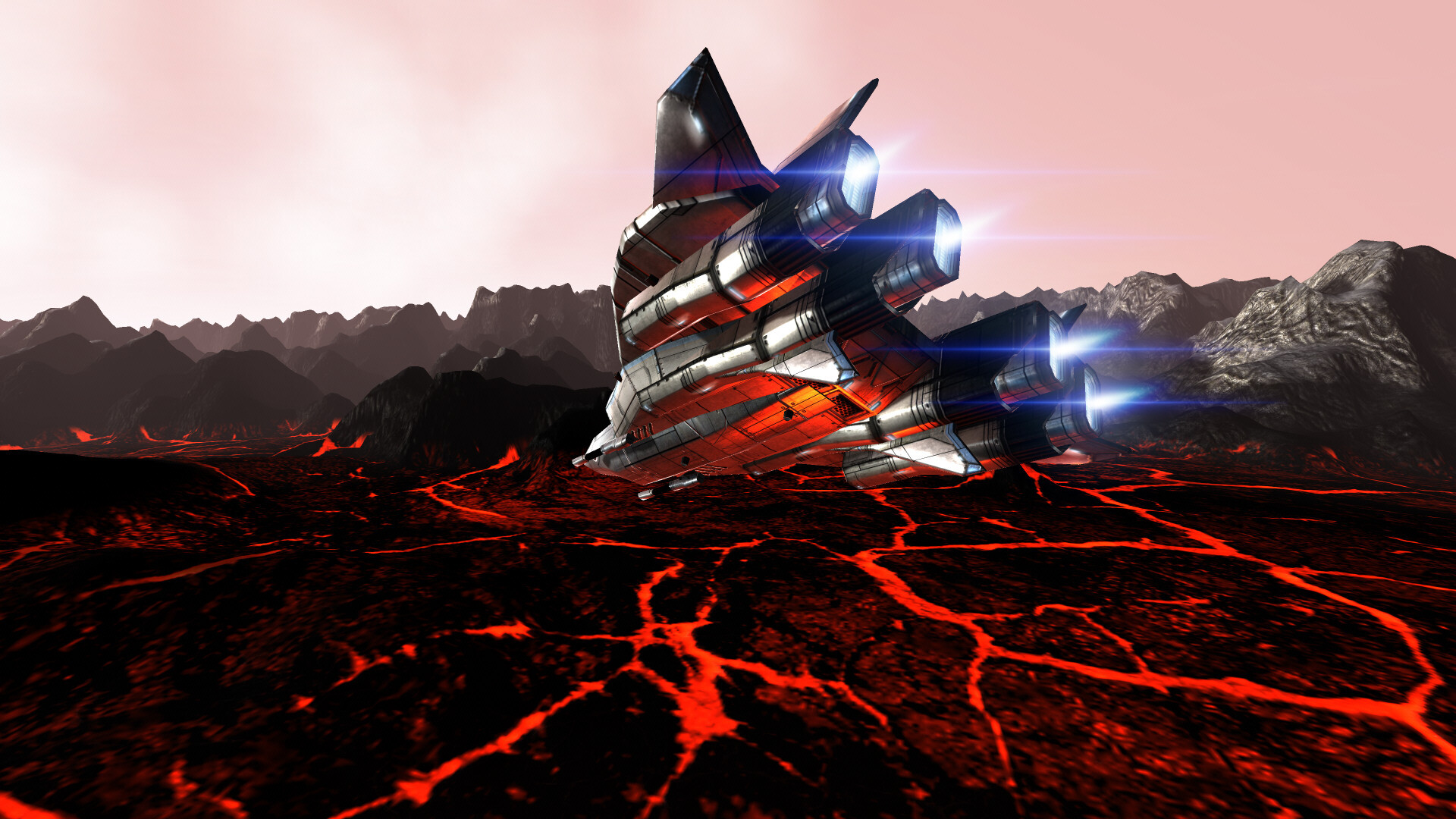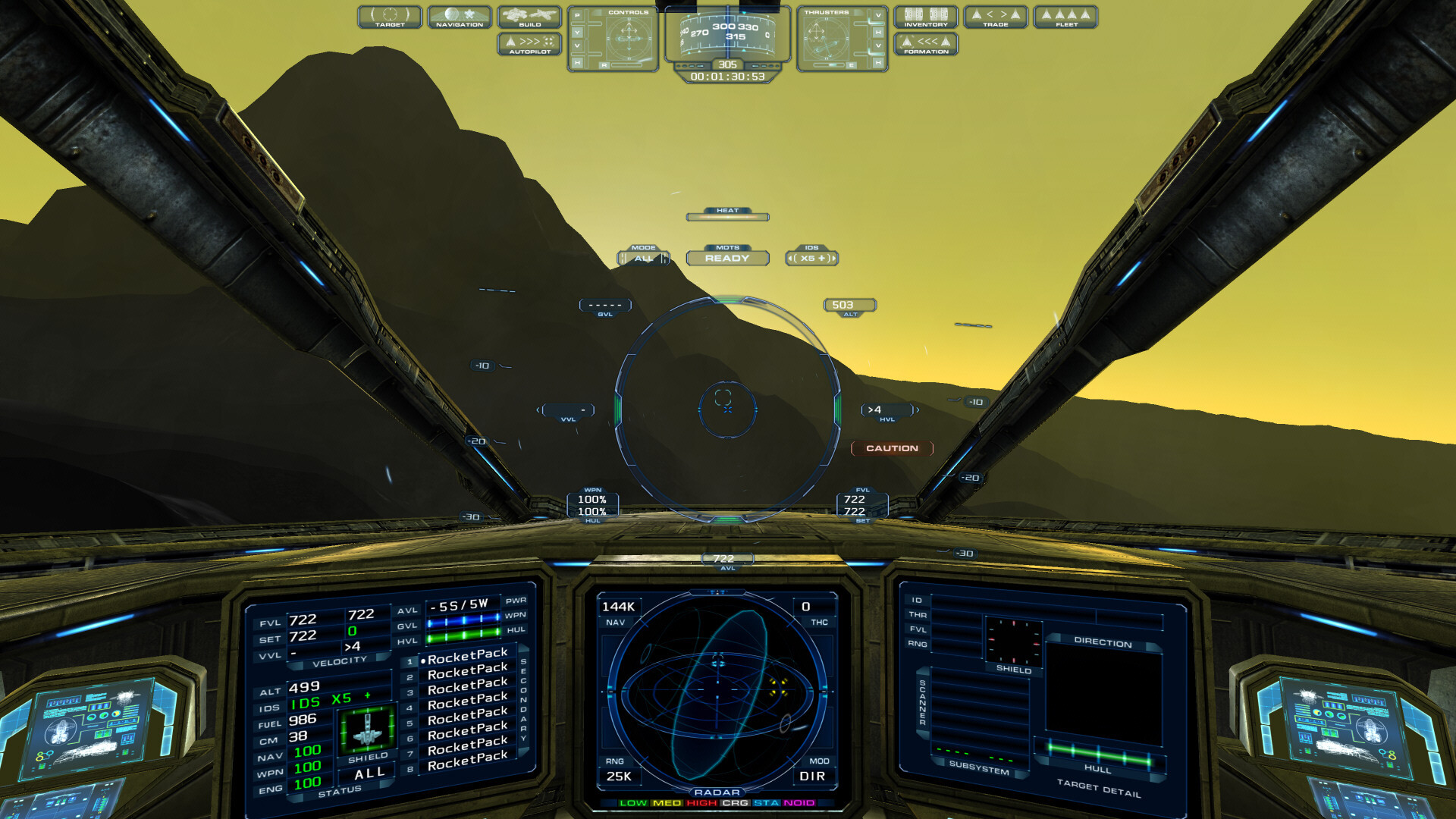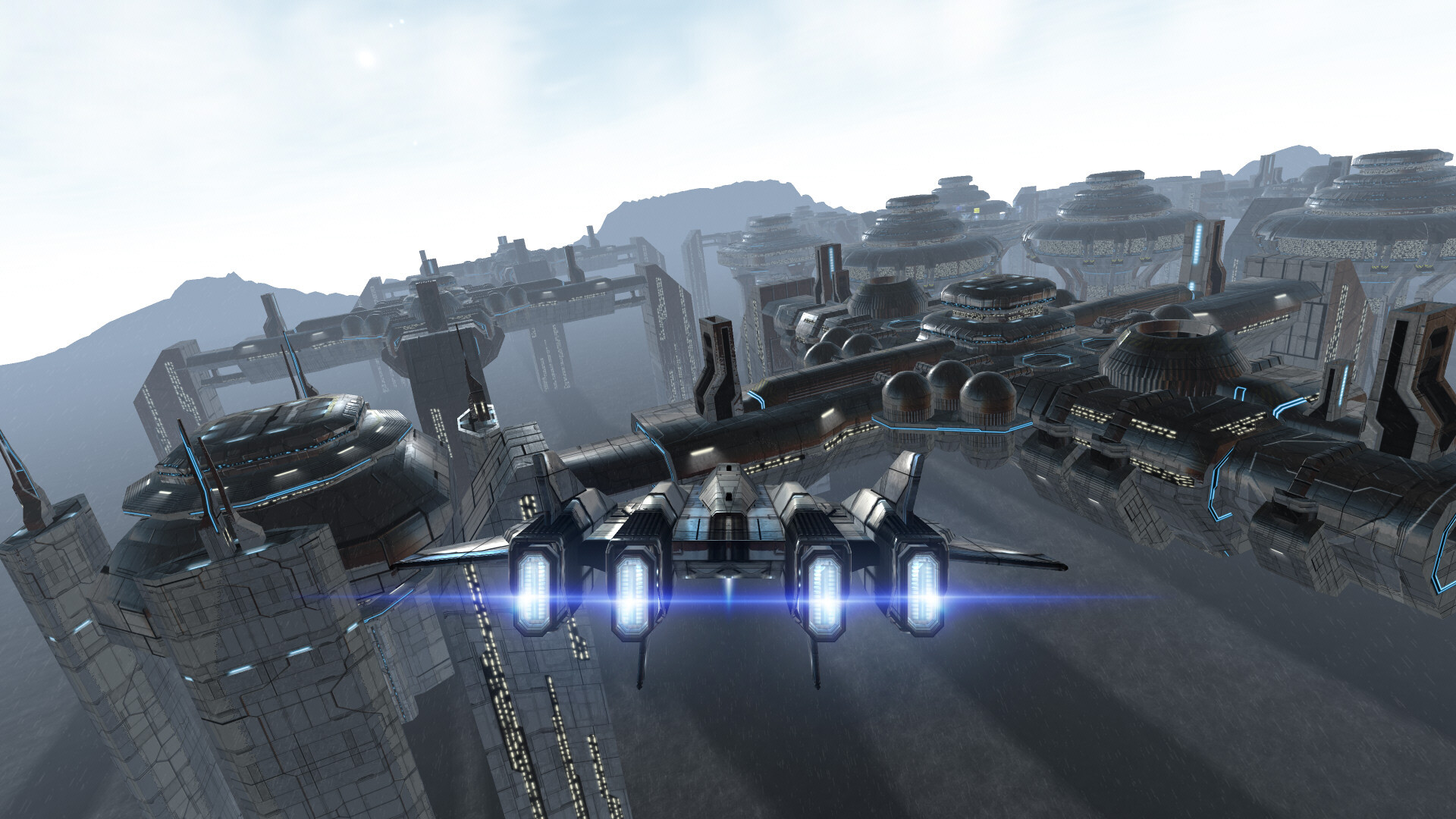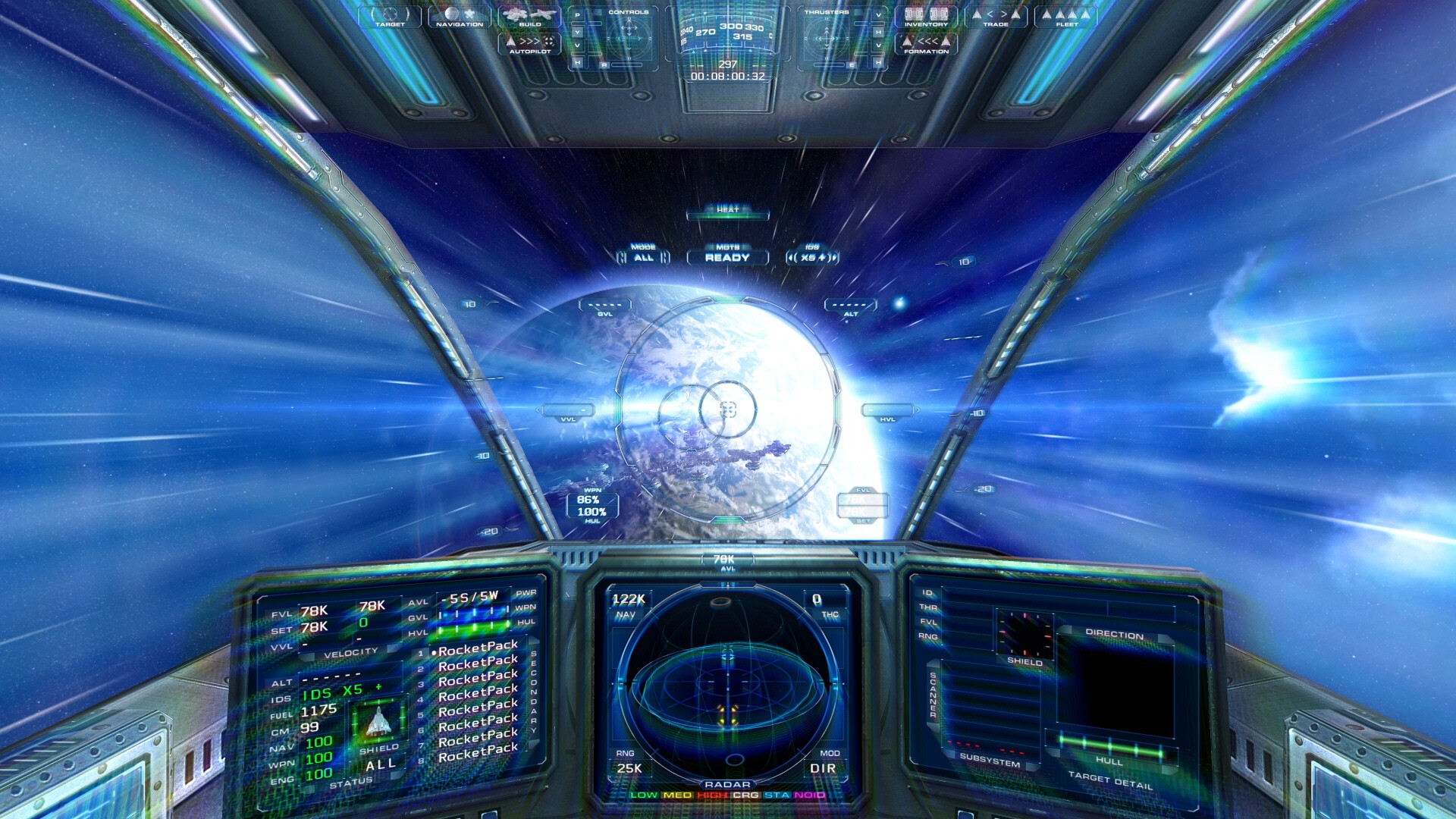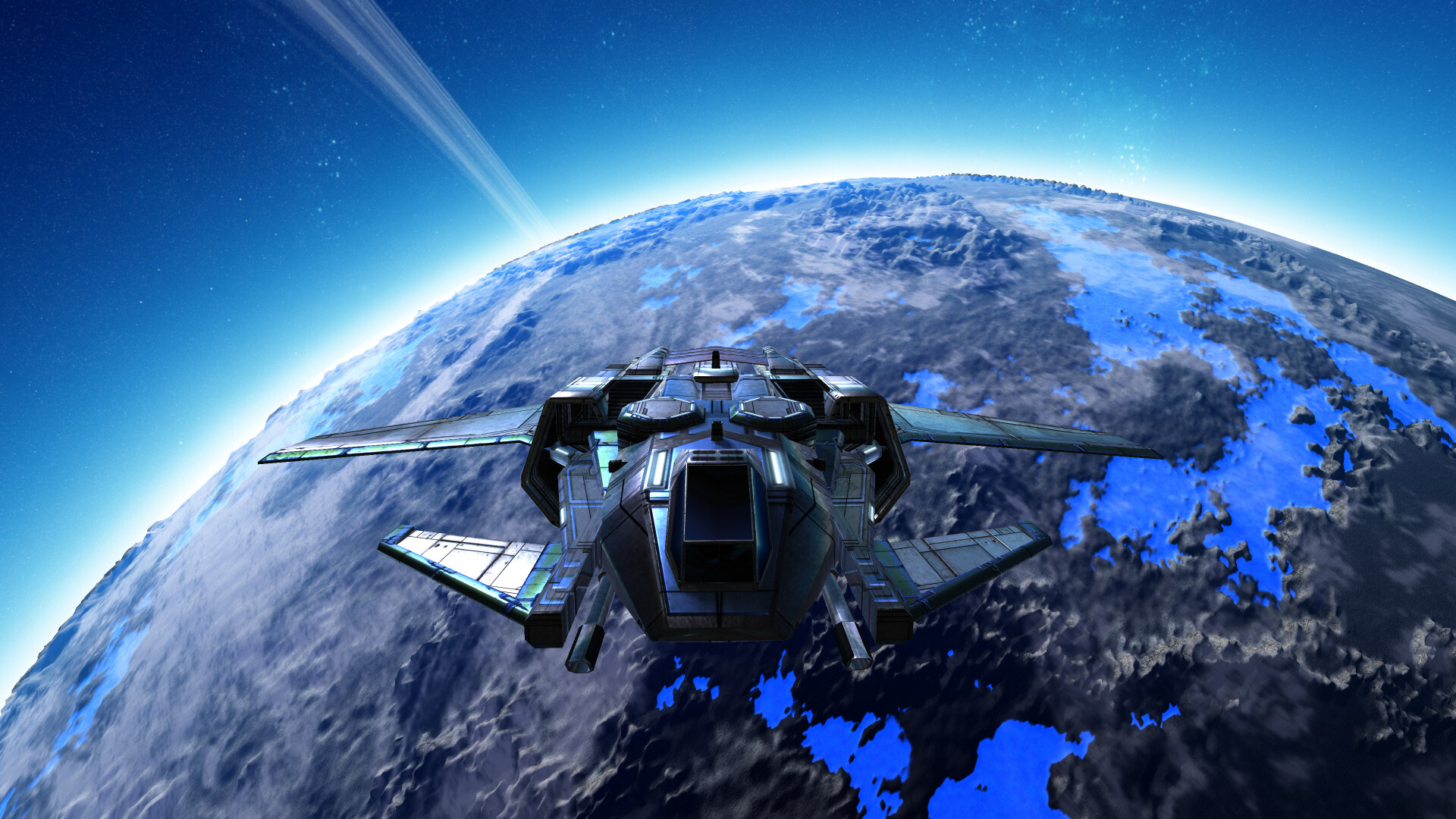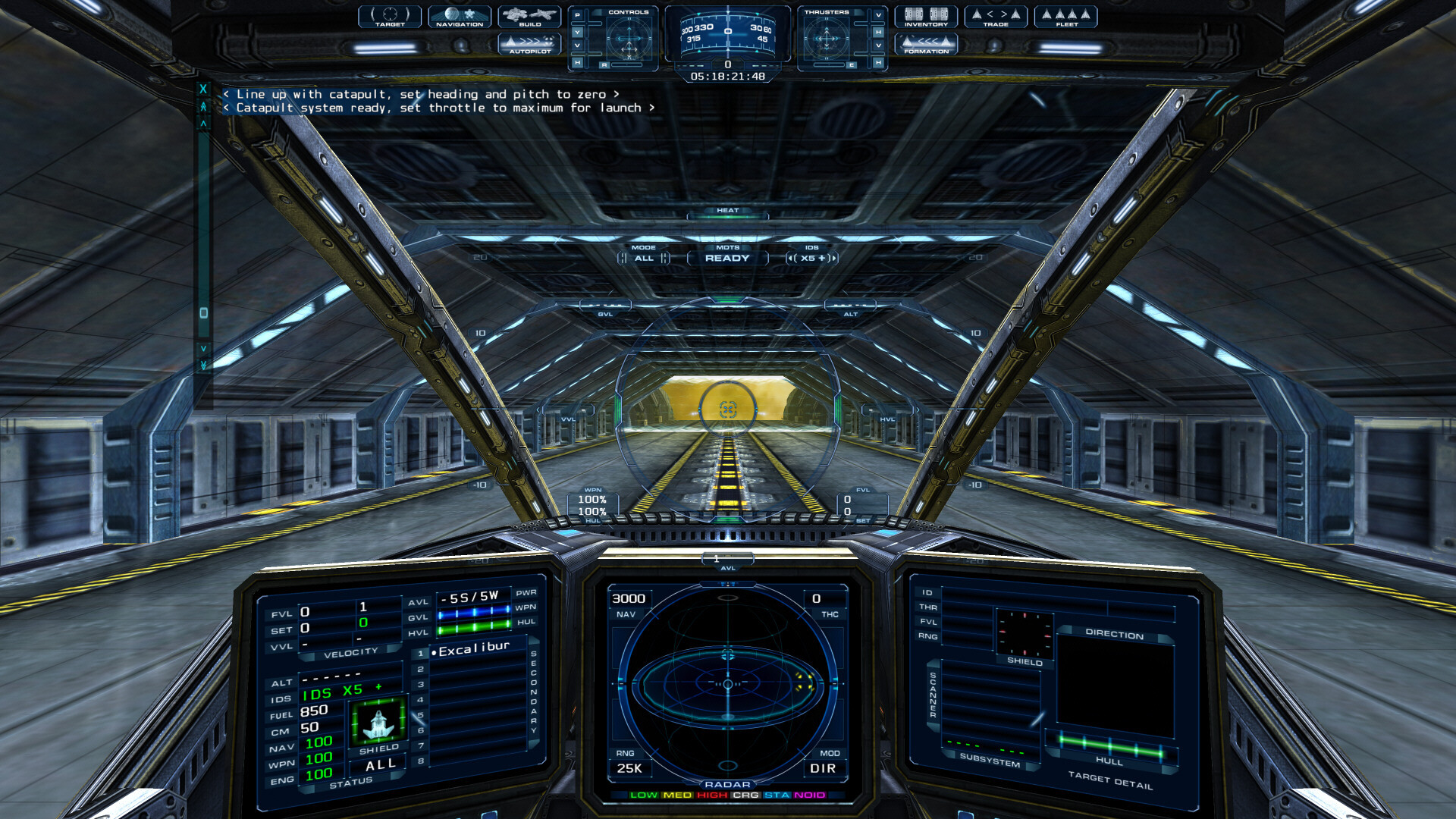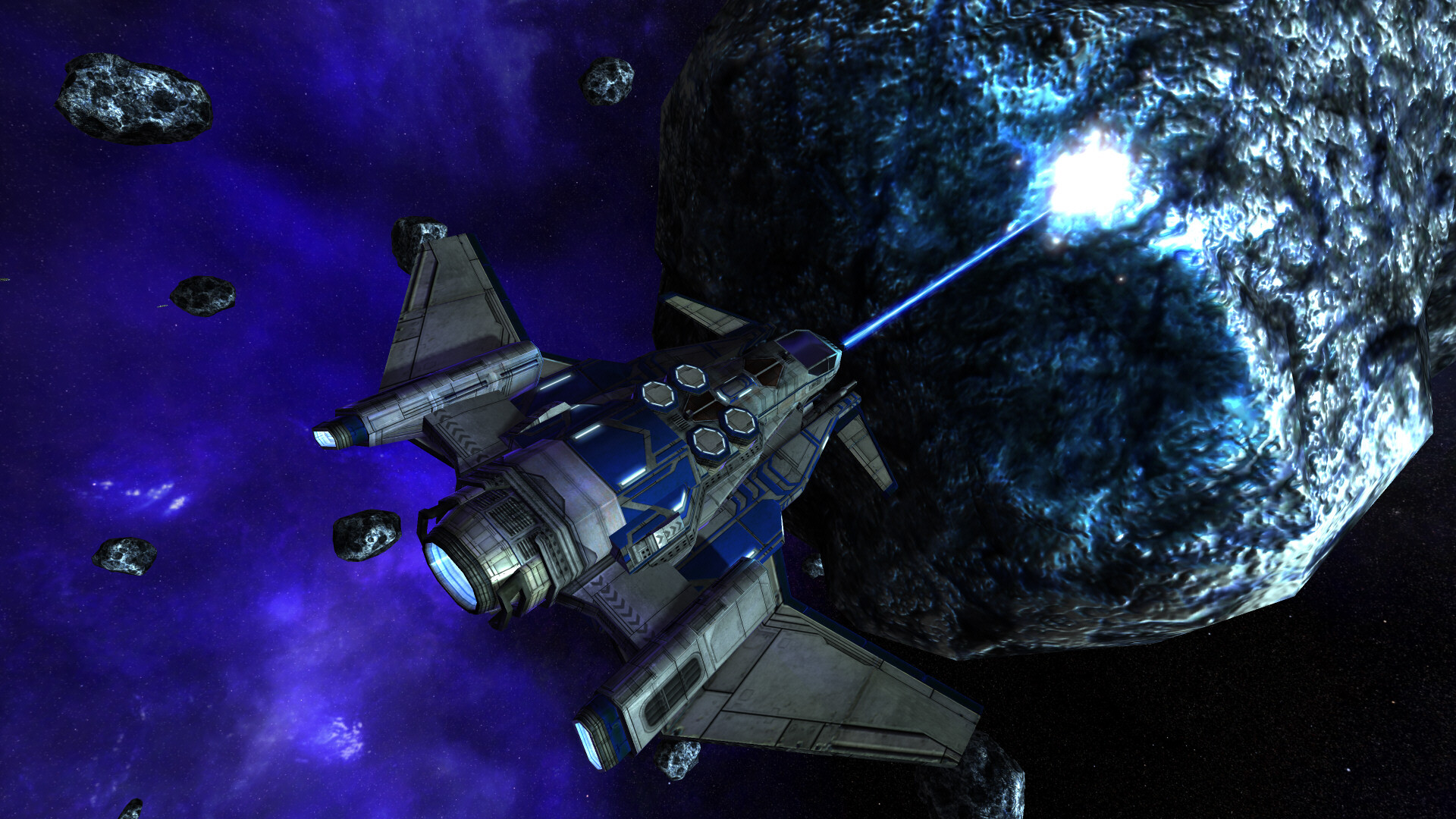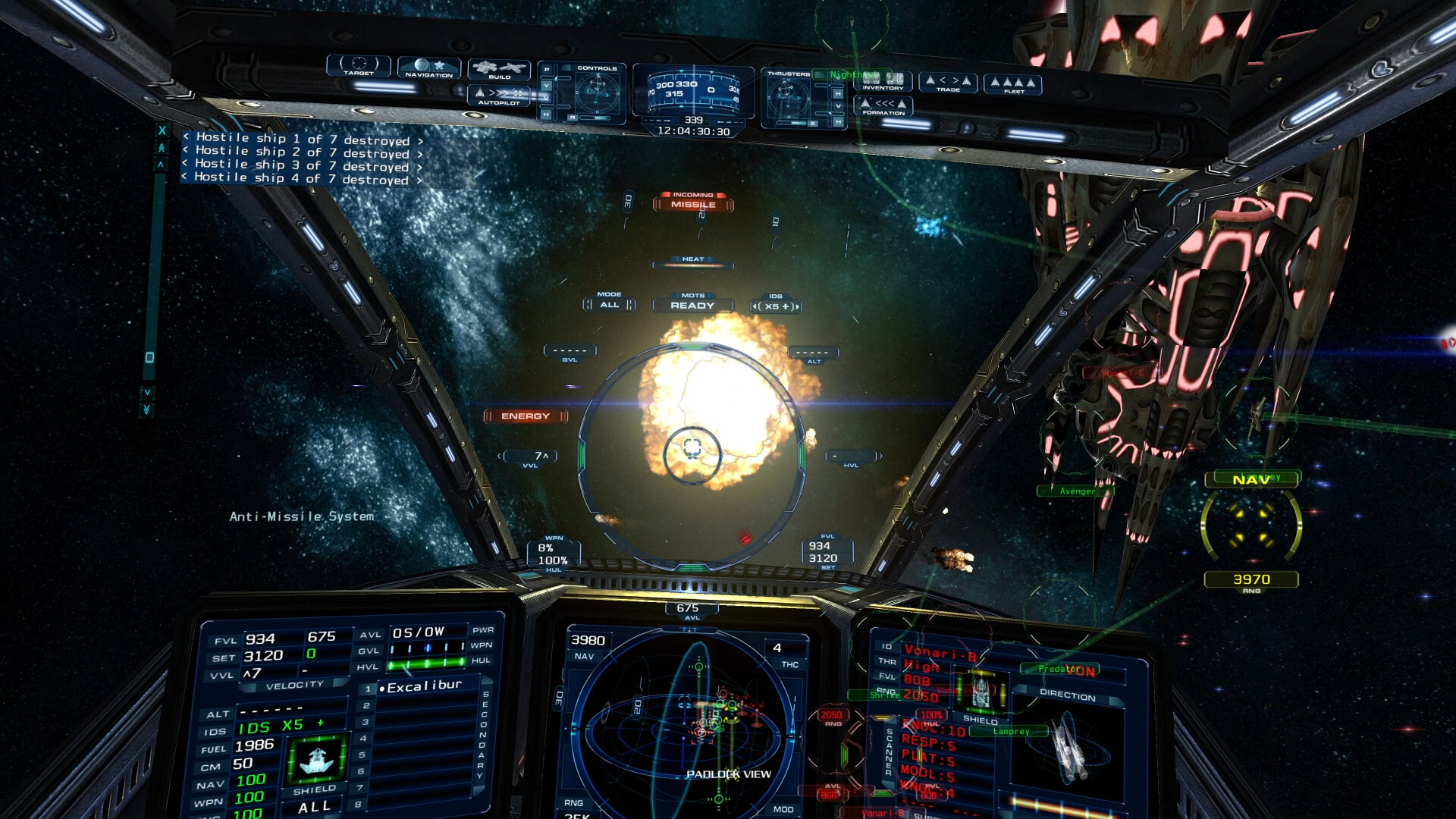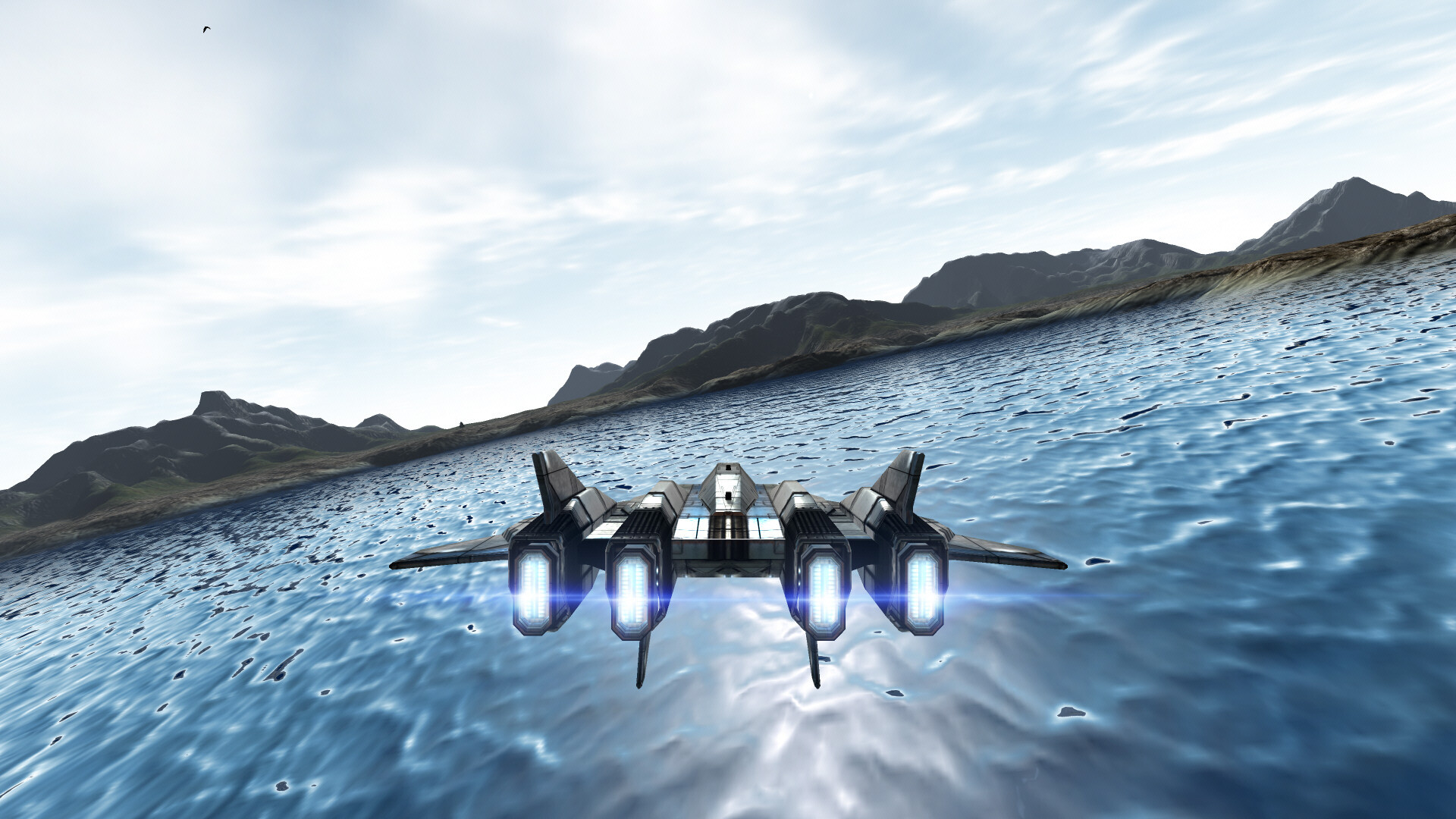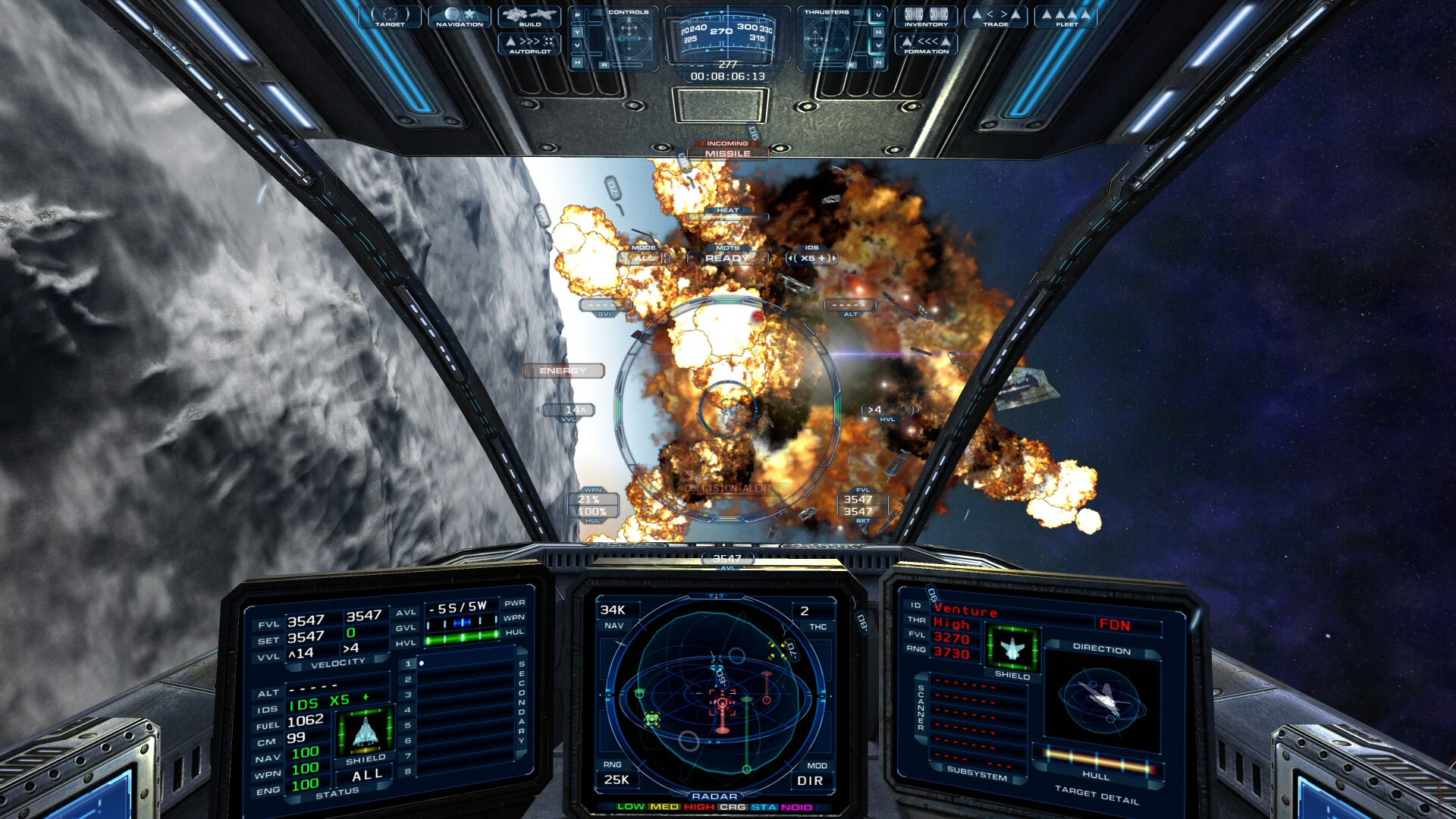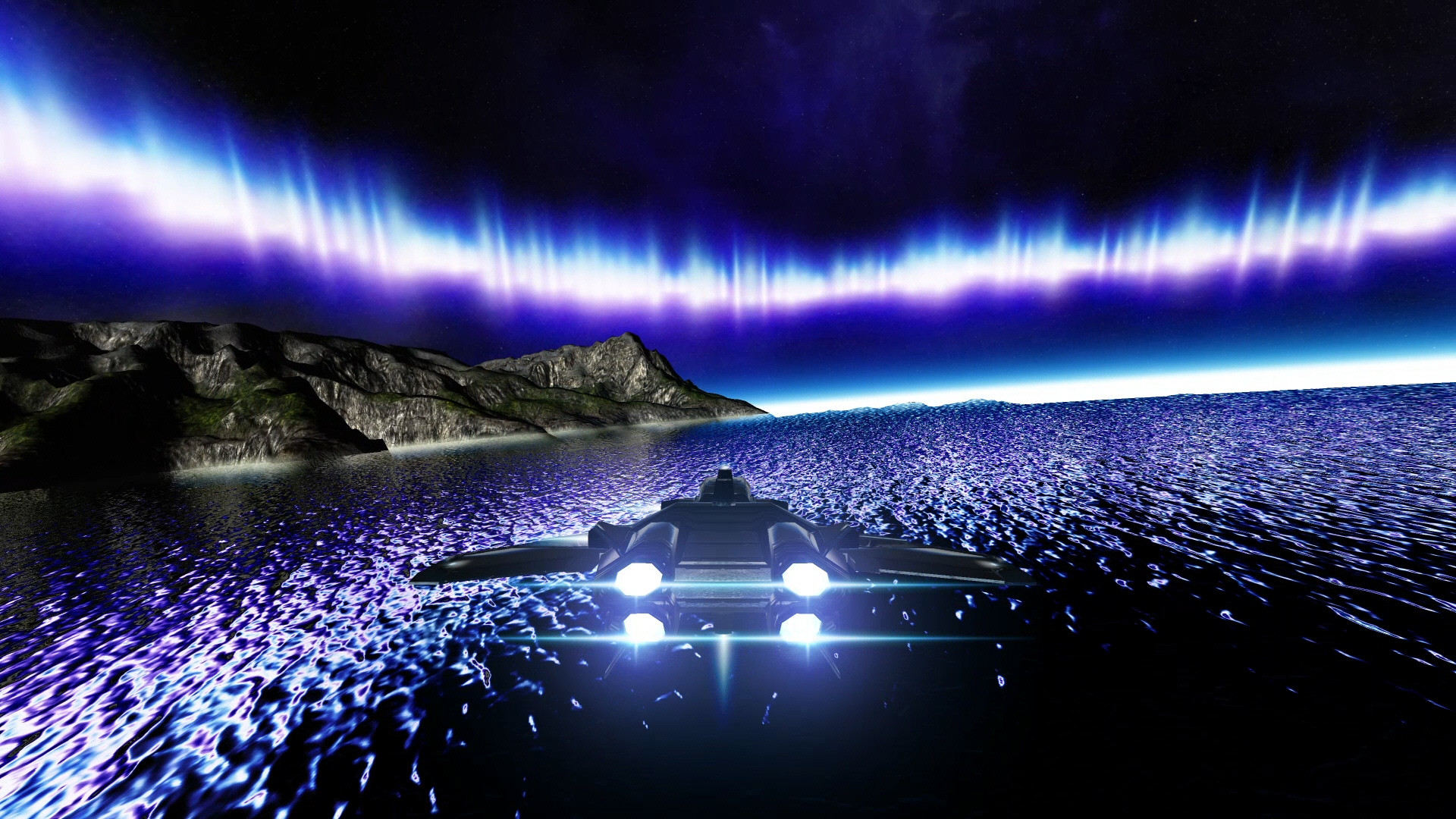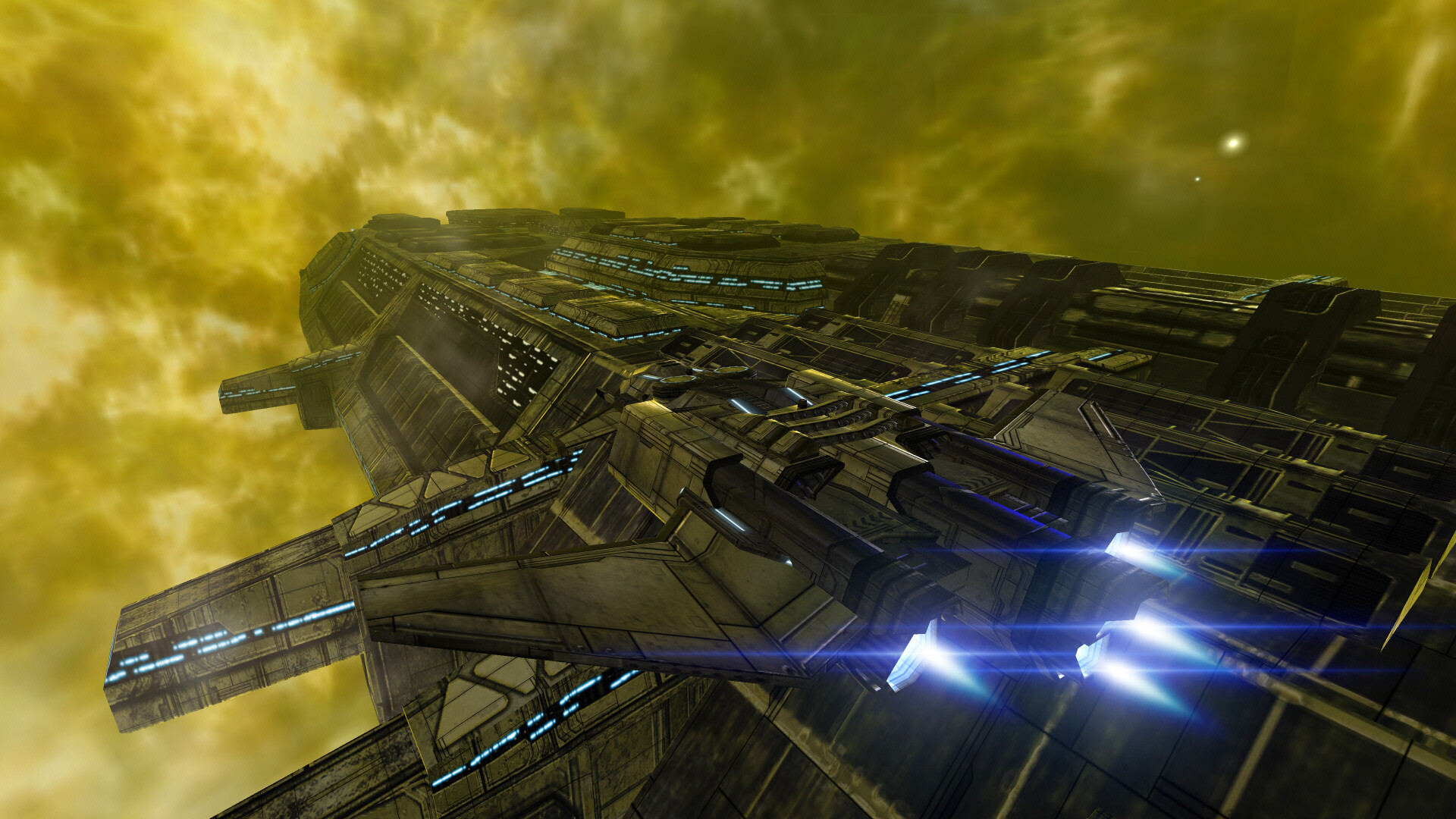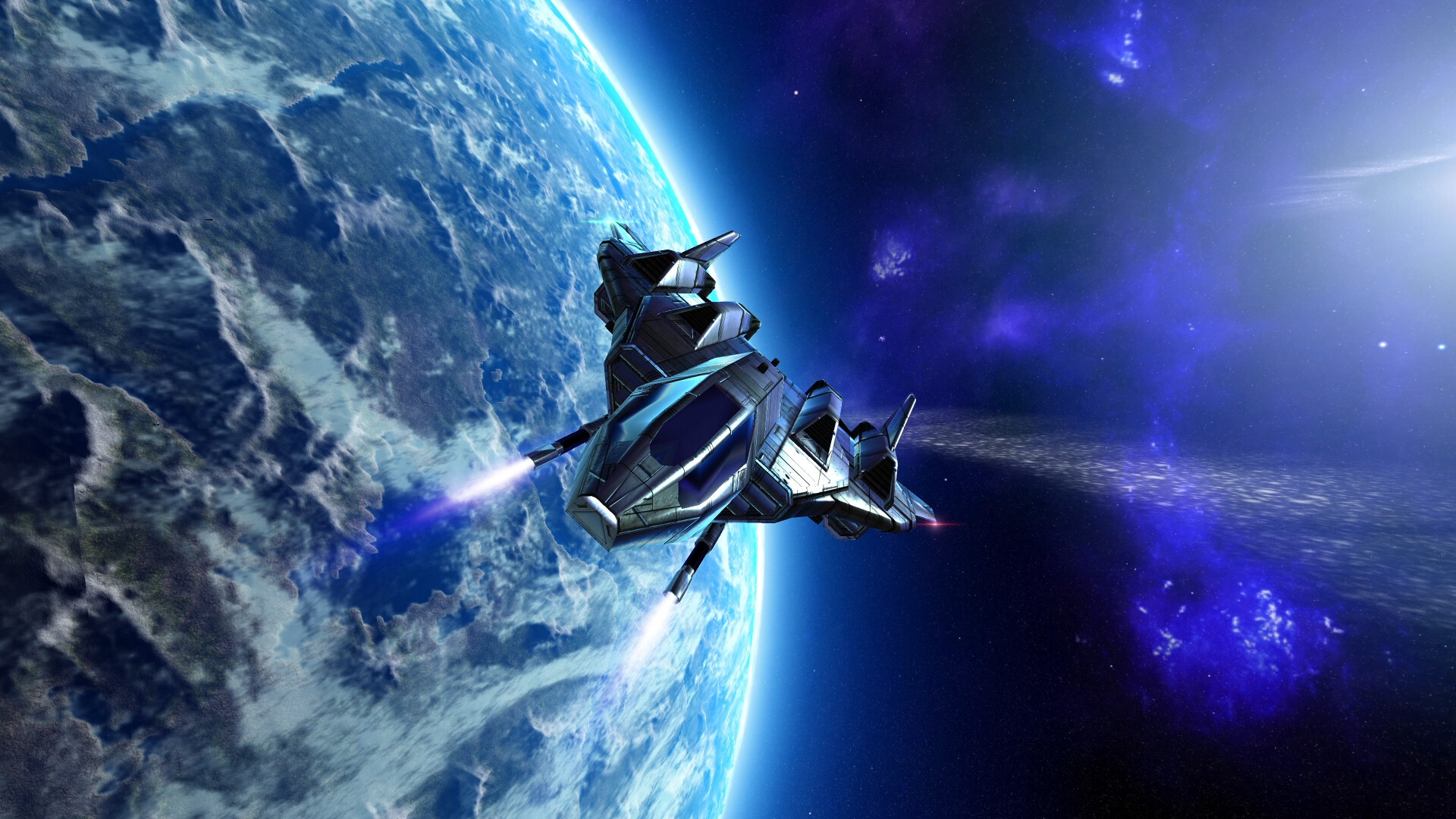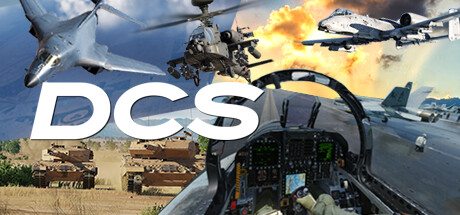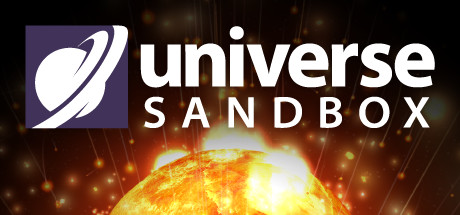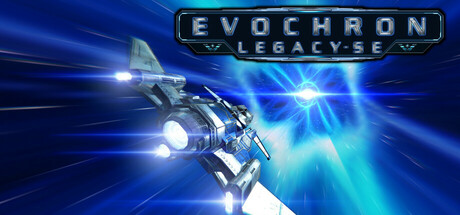
Разработчик: StarWraith 3D Games LLC
Описание
Evochron Legacy SE features long distance travel using space folding point-to-point jump drives and offers many objectives at quickly accessible local waypoints to maximize time efficiency. This 'get-to-the-point' approach to gameplay also extends to menus and ship systems where you control and select options directly from the cockpit with minimal menu layers. You are in control of your ship virtually all of the time in space, including player controlled combat and planetary descents. Manage difficulty, challenge, and risk by choosing where to fly and accept contracts for set pay or formulate your own objectives to get paid to do what you want on your own terms.
Since Evochron Legacy is not a story or character based game, you are not limited by plot requirements or pre-selected character roles. So you can change the course of gameplay and your role in the game's universe at just about any point free from the confines of character limitations or required narrative plot points. Your decisions and actions define your role in the game and establish your reputation, wealth, progress, and ranking. The emphasis is on real-time tactical gameplay strategy and flight simulation for both combat and non-combat objectives.
Your ability to successfully survive dangerous scenarios in space, develop trade strategies, evade detection, harvest resources, efficiently explore, configure ships, and transport items can be just as important as your skill in combat. Set in a vast explorable and seamless style universe, Evochron Legacy SE offers a high level of open freeform gameplay with many diverse objectives and paths to choose from.
- FEATURES:
Advanced Space Flight Simulation Focused Gameplay
Extensive Space Combat Systems and Options
Freeform Gameplay Directed by the Player
Diverse Gameplay Options
Make Gameplay Decisions Based on Advanced Information Systems
Starting Role and Simulation Options
New Quest Menu and Options
Advanced Seamless Style Universe Structure
Expanded Interactive Training
Unified Save Game Architecture and Offline Support
Simplified Faction and Location Based Cooperative Multiplayer
New Single Player Fleet Command System
Ship-to-Ship Options
New Build and Deploy System
New Economy and Market Systems
Three Installable Weapon Classes
New Equipment Technologies
New Exploration Options
Engineering Lab
Expanded Shipyard and Design Options
Newtonian Style Flight Model
Interactive and Functional Universe
Quick Navigation and Inventory Management Access
New Music by Rich Douglas
Diverse Flight Control Systems and Options
Broad Compatibility and Adjustable Performance
Track IR Support for 3D Head Tracking
Поддерживаемые языки: english
Системные требования
Windows
- OS: Windows 10 64-bit
- Processor: 2.2 GHz AMD/Intel
- Memory: 4 GB RAM
- Graphics: 2 GB OpenGL Compatible*
- Storage: 2 GB available space
- Sound Card: Windows Compatible
- Additional Notes: * Dedicated video memory exclusively, shared memory is not supported.
- OS: Windows 10 64-bit
- Processor: 3.4 GHz or faster multi-core AMD/Intel
- Memory: 4 GB RAM
- Graphics: 3 GB or more Vulkan Compatible*
- Storage: 4 GB available space
- Sound Card: Windows Compatible
- Additional Notes: * Vulkan required for experimental VR mode.
Отзывы пользователей
This is the space game you have been waiting for.
This game is a joy to play. A joy to fly around in. With IDS switched completely off (no Flight Assist at all) it is an extremely fun challenge too. If you like Newtonian flight with NO SPEED LIMITS, 6DOF dogfighting combat, trading, mining, exploring, racing, base building and so much more, I can't explain how much fun I'm having in this game.
One piece of advice: DO THE TRAINING. It is not too long and gets you hyped for the game, but without it, the game is too hard. Mercenary Spacecraft, prepare to launch!
It's like an indie mix of Elite, X, and FreeSpace with a 90's sci-fi B movie vibe. Highly recommend it if you like space sims.
I never played this game. My friend did. I think the dev is dedicated. It deserves the support.
Also this is a nieche i like, so keep it alive boys.
Every bit as good or better than Elite Dangerous (especially after FD decided to devote their resources to their FPS game). Great flight model and combat is better.
if you like Elite Dangerous you will love this oldie.
Imagine Elite Dangerous as it should have been. Awesome game.
Absolutely brilliant. Everything works . Amazing game , amazing music . It’s certainly a full plate to deal with. Once you get the hang of it you won’t let it go.. I was hooked from the the first game Arvoch Conflict. back in 2008. This is on another level. The after sales service is the best I’ve experienced on Steam
Excellent space sandbox. A little rough around the edges, but a ton of content, and has an openness about it that you don't find in other games. Excellent flight model as well, for those of us who prefer true newtonian.
I have played this game for hours on Android. It is a better space flight simulation compared to X4 or Elite and is actually easy to understand and control
Couldn't install. It has a virus in it.
Threat name: Win32:BogEnt [Susp]
Severity: 2
Threat type: Malware
File name: EvochronLegacySE.exe
File path: /Volumes/SSD/SteamLibrary/steamapps/downloading/398170/EvochronLegacySE.exe
Process: /Applications/Parallels Desktop.app/Contents/MacOS/Parallels VM.app/Contents/MacOS/prl_vm_app
Detected by: Auto-Protect
Status: Threat blocked
A great space sim!
A beautiful space sim. The Newtonian physics of space flight in this game is a different take on space flight than most space sims I've played.
Try to demo first, don't spend all of your refundable time in the tutorial like I did, to find out you hate the game.
I literally spent hours and hours on this tutorial and got in to combat with the drones and found out I suck at this type of flying and combat and it really ruined my bad.
You can't turn off camera shake, so when you are getting pelted your view shakes all over the place making it impossible to hit the ship you are targeting.
I love space games, might try it some more, but so far I am not having any fun at all, and feel like I wasted my day.
good
It felt like a newtonian physics space game based on the description, but it's just DCS in space. Why does a vacuum have drag?
EvoChron Legacy Steam Review.
First off I would have to say, I've found this game pretty addictive, racking up about 50 Hours in my first week. Not nearly enough to be an expert, but enough for a reasonably informed review.
Richard Douglas'score is excellent and I have downloaded it and just put it on in the background with some screenshots when I am chilling out. It's really that good.
Evochron is just amazing value for it's small file size, it competes well with much larger and more expensive offerings, like X4 quite well IMHO. I can confidently say Technical support is excellent. While I had no troubles getting the game to work on my tower; I ran into some difficulty with my laptop. Turned out that there as a small error being generated between my updated Razor Mouse Driver, and an old config file. A problem that this app was sensitive too. Anyhow it ultimately was not caused by the game, but The developer was very prompt and helpful in helping me track down the bug.
The Default Start is to begin as a Mercenary Pilot, Which I think is a left over from the games last iteration as Evochron Mercenary. As Flying and Navigating systems has some learning curve, I would suggest starting as a Miner/Trader, it will give you and opportunity to learn the controls, without being Harassed by Enemies. My current start is as an Independent, and as such I have not been attacked at all; so if your looking for a little more action you might pick Federation or Alliance; I don't think it will make any difference besides who attacks you.
Evochron employs more keybindings than any other game I have ever played and thats a good few. Nearly every Key has a bind, and while most are just the key, a few are Alt Keyed. This is not a huge problem there is a map online that you can download and personalize; The problem is a fair number of keys can get you in a little trouble, M-Mouse Look if accidentally pressed will cut out your ability to control your spacecraft without knowing why, fortunately I found a thread addressing this problem. Obviously your going to want rebind some of these keys to a Shift or Alt, as a safety measure. I think a Gaming mouse is a huge help here too, as I personally bound my Primary Weapons to a side button on my Razor Mouse, and my left mouse button to select target in gun-site, Just a personal choice. Anyhow I think your going to want to get in a few hours flying, before your finalize your key binds.
The Skyscapes are beautiful and the Stations and ships well executed if you love space games, you wont be bored. At the very start mining is your very best way to make money, but it soon enough will become a little tedious, so you'll want to do some trading; which while normally not nearly as profitable will get you out of the back yard. Teach you the Plotting, Hyperspace system, and allow you to check out other systems and again the game art, which very good. Landing Dirtside is a challenge the first time or two, but if you come in slow about 500Mps and follow your beacons, you'll be acing that in no time.
Evochron is not the product of a large studio, but of one Dev. So sometimes you might have to work around a small glitch. I was running from Talison to Sapphire for the 20th time; when the pathing bugged and I kept crashing into the gateway and crashing the app. On the 4th Try I just hand flew the ship to a position directly in front of the mouth of the gate and took it through and went autopilot from there without further trouble. 10 hours Later and probably as many runs to Sapphire and have not seen the bug again. Anyhow any Indie project is going to have its needles in the haystack, but overall Evochron Legacy is more that worth them. As a long time X4 Player who just got sick to death of playing savior of the Universe and that games buggy AI; Legacy fits me like a glove, it truly is the sandbox X4 claims to be and as I am happiest in game flying about in a single seater with no one to answer to but myself. If that sounds good to you too, try this game. It does have a demo, and I'm sure you'll buy it in no time.
Игры похожие на Evochron Legacy SE
Дополнительная информация
| Разработчик | StarWraith 3D Games LLC |
| Платформы | Windows |
| Ограничение возраста | Нет |
| Дата релиза | 26.04.2025 |
| Отзывы пользователей | 83% положительных (320) |

